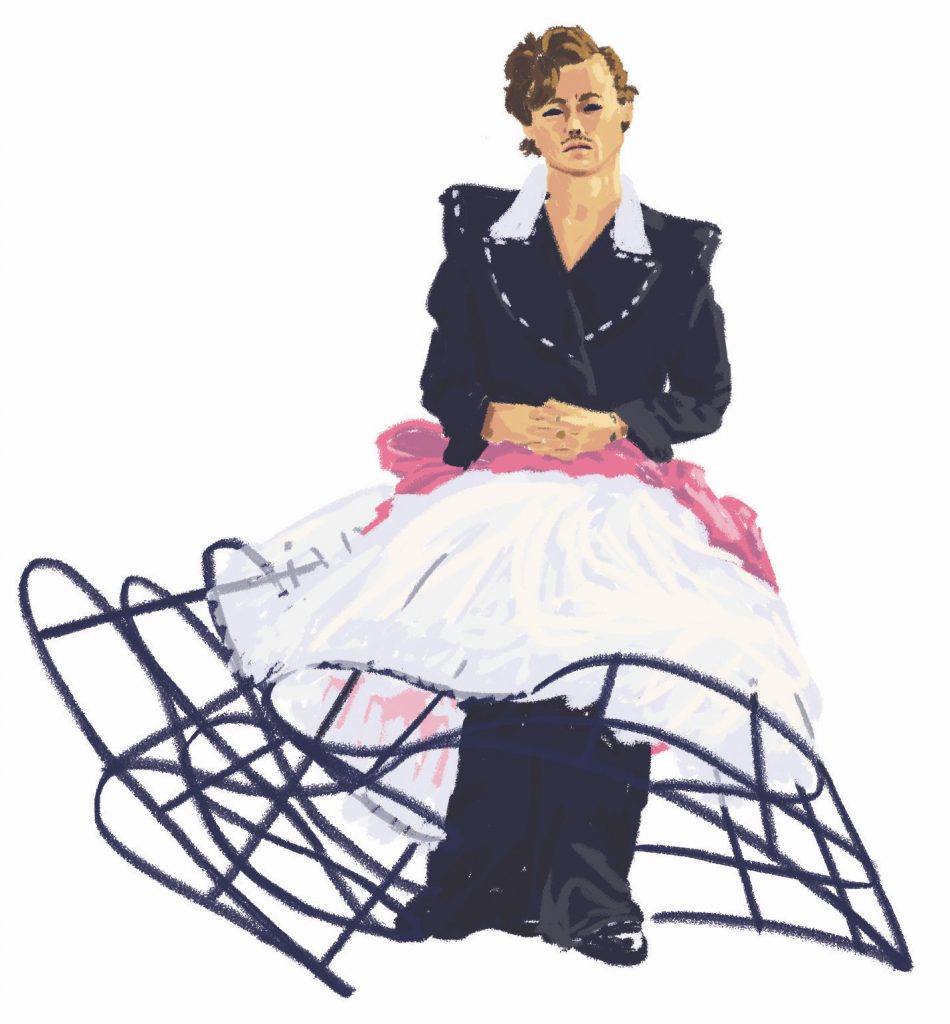The baby blue dress with cascading layers of fabric trimmed in black ribbons on the cover of Vogue’s December 2020 received a flurry of media attention, not directed at the outfit but at the man wearing it. English singer and actor Harry Styles was the first man to appear on a Vogue cover alone, and his outfit choice is just one example of the larger movement to make all fashion choices accessible regardless of gender. Yet Styles is far from the first celebrity to take a step towards nonconformity, in the past many diverse icons have left their mark on fashion history.
“If you think of people like Harry Styles or Billy Porter, they’re definitely blending the fashion lines and making fashion more of a spectrum and more accessible.”
—Amanda McVey, senior
As a professional model, Palo Alto High School senior Amanda McVey is familiar with the movement away from gendered fashion.
“If you think of people like Harry Styles or Billy Porter, they’re definitely blending the fashion lines and making fashion more of a spectrum and more accessible,” McVey said. “In the sense of moving away from gender traits, they pick things with different silhouettes, different patterns and colors.”
Gender-neutral outfits through time
Androgynous fashion promotes clothing that does not conform to gender norms, allowing people to express themselves in any way they would like.
Although Styles became an icon for his unconventional looks, senior Atticus Scherer hopes that marginalized communities also receive recognition for their role in deconstructing the binary of gender in fashion.
“I know people are going crazy about Harry Styles on the cover of Vogue and yes, that was cool to see, but people acting like he’s doing something never before seen is foolish,” Scherer said. “There has been gender-bending fashion going on long before him, especially in the queer POC [people of color] community.”
These pioneers from historically marginalized or overlooked groups include the Japanese fashion designers Yohji Yamamoto and Rei Kawakubo, as well as Prince, Freddie Mercury, Jaden Smith and Billy Porter.
“He [Harry Styles] is still a cisgender white male,” Scherer said. “That does not take away at all from his achievements. However, it is important to look at the trailblazers before him that allowed him to be himself and dress however he wants on the cover of Vogue.”
For instance, in the early 1900s Coco Chanel introduced trousers to women’s fashion. Between the late 1960s and 1980s, many pop culture icons such as Elvis Presley, David Bowie and Jimi Hendrix famously wore what is considered more feminine styles of clothing and makeup. In the 2000s, many more men have started to wear makeup and embrace gender neutral clothing.
“I think we’re definitely seeing a lot more male models in fashion, or editorial style, but blurred fashion lines in general, which I think is great,” McVey said.
Gen Z blurs boundaries
Scherer attributes the rising popularity of androgynous looks in mainstream fashion to Generation Z and has embraced androgynous style himself.
“I used to get dressed up [before the pandemic],” Scherer said. “Just some simple jewelry, light makeup or even a heel or a skirt or dress is fun to just throw on to make any outfit just a touch of androgynous.”
If more people open their minds to unrestricted fashion, the industry will have to shift to accommodate the new demand.
“I think that people just growing more accepting has led to this freedom of expression that many, especially Gen Z kids, are flourishing under,” Scherer said. “The modeling and fashion industries have to accommodate us now.”



